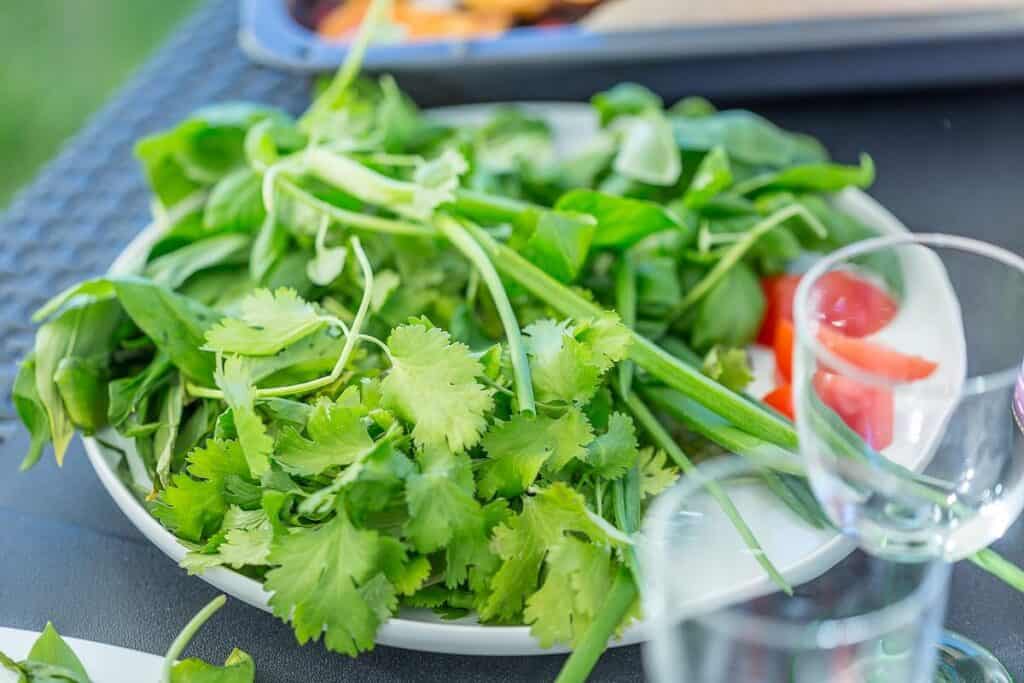There’s often that one ingredient you can’t stand, yet many others seem to love it. Picking it out from a dish can spark a debate among friends and family, sometimes leading to being labeled as a picky eater. Whether it’s pungent blue cheese or slimy oysters, find out where you stand on this list of polarizing ingredients — are you among the fans or the critics, and are you ready to defend your stance?

The sliminess of oysters
If you’re not a fan of seafood or slurping, oysters are probably not for you. They have a slimy texture and a briny, ocean-like flavor profile that some love while others hate. Oysters are usually eaten raw with lemon juice or cocktail sauce straight off the shell. However, you can also bake, fry or grill them, which may be a more appealing option if you’re not too fond of eating them raw.
Don’t let oyster’s texture stop you from trying new ways to enjoy them that better suit your palate. One popular dish is oysters Rockefeller, which features baked oysters topped with a buttery sauce infused with herbs and sprinkled with bread crumbs. The beauty of this dish is that you can make substitutions as needed, such as opting for low-carb breadcrumbs or adding a touch of spice.
The cautionary tale of MSG
Monosodium glutamate, known as MSG, is a food enhancer commonly used in processed foods and Asian cuisine. For years, it has been the subject of controversy, with some individuals claiming it causes symptoms such as headaches, nausea and chest pain. However, researchers have not established a clear link between MSG and these symptoms. Despite the United States Food and Drug Administration or FDA classifying MSG as generally safe, it continues to have a bad reputation, leading people to avoid it as a precaution. With the rise of healthy eating, many are opting for natural ingredients in their diet, whether it be using stevia powder as a natural sweetener or, in this case, table salt instead of MSG.
The distinct smell of durian
Known as the King of Fruits in Southeast Asia, many people love durian for its sweet, rich, creamy flavor and soft texture. However, durian has a strong and distinctive smell that some find unbearable. Its funky smell is so controversial that the fruit is banned from public transportation and hotels in certain countries like Singapore and Thailand. Whether you view durian as a delicacy or not depends on your ability to tolerate its powerful aroma. Those willing to get over its aroma will be able to enjoy its complex flavor profile that has won over the hearts of durian lovers.
The boldness of blue cheese
Similar to durian, blue cheese is another controversial ingredient that gets cast aside for its strong smell and flavor. Its funky, salty and sharp taste, characterized by a crumbly and creamy texture, is not for everyone — especially after you find out that it’s made with edible mold. The blue veins and pungent odor are a result of the mold culture that grows throughout the cheese’s crevices as it ages. This may be offputting to some, but many have grown up eating it and appreciate the depth of flavor it brings to various dishes. Just like how chicken curry might be a staple in some households, a blue cheese charcuterie board can be considered a must-have on the dining table for others.
Cilantro — love it or hate it?
Cilantro is a staple in dishes like salsa, guacamole and salads and is also known as a highly controversial herb. For some, it tastes fresh and citrusy, while others say it has an unpleasant soapy flavor. According to the Flavor Journal, the difference stems from genetic factors. People with a genetic variation in their OR6A2 gene are more sensitive to the aldehydes in cilantro leaves, which results in a soapy taste. Some can overcome their dislike through repeated exposure or by opting for dried cilantro, which has a more subtle flavor.
The truth behind artificial food coloring
Artificial food coloring is mainly used to make products more visually appealing to consumers, as it has no nutritional value. Although this ingredient makes candy more vibrant, Dorito chips more red and popsicles more colorful, it may come with potential health risks, which have sparked a debate around its usage.
According to Environmental Health, studies have shown some association between synthetic food dye and adverse behavioral effects in children, namely hyperactivity and inattentiveness. In response to these concerns, the FoodNavigator has reported that California plans to ban public schools from serving food containing any of the six synthetic food dyes starting in 2028. Meanwhile, the U.S. FDA continues to approve these dyes as the agency believes there is insufficient evidence to prove they are harmful. The divide between the guidelines has fueled debate on whether foods containing dyes should be avoided altogether.
The conflicting opinions of the culinary world
Food is widely subjective as people have different taste preferences influenced by their upbringing, cultural background and genetic predispositions. Ingredients like cilantro and artificial food coloring show a diverse range of opinions in the culinary and scientific world concerning taste and health. Whether you love or hate these controversial ingredients, asking anyone about their feelings towards them will surely spark a lively debate.
Zuzana Paar is the visionary behind five inspiring websites: Amazing Travel Life, Low Carb No Carb, Best Clean Eating, Tiny Batch Cooking and Sustainable Life Idea. As a content creator, recipe developer, blogger and photographer, Zuzana shares her diverse skills through breathtaking travel adventures, healthy recipes and eco-friendly living tips. Her work inspires readers to live their best, healthiest and most sustainable lives.